In May 2012 I was very fortunate to have the opportunity to work with Ronnie Araya at CAST, the Centre for Architectural Structures and Technology, part of the Faculty of Architecture at the University of Manitoba in Winnipeg. It’s a beautiful facility and there’s no other like it in the world. Using the innovative technology of fabric formwork, the aim of CAST is to create new approaches to making architectural structures. For me, however, I saw great potential in experimenting with and adapting this fabric-based technology to my current studio research. The images show how I began to create Fabricated Tree Form No. 1.
Here you see a series of images that show the making of a positive plaster form, beginning with fabric, from which I made a five-piece plaster negative mould for slip-casting. The flexibility and elastic quality of the fabric used in the model making process imparts a distinctive quality to the porcelain sections of my new tree forms.

Manipulating the water-filled form with string 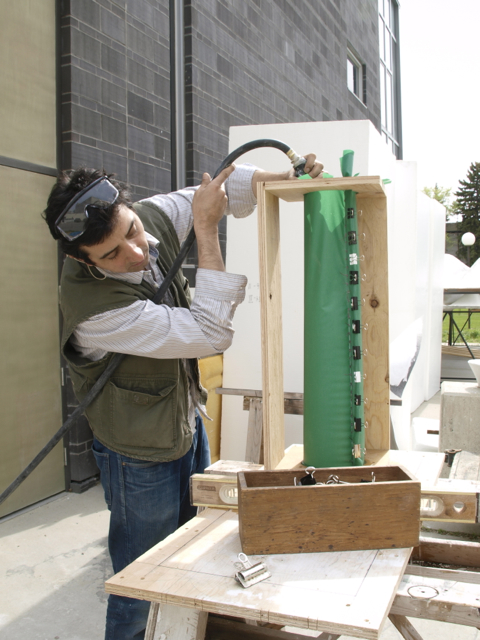
Filling the fabric form with water 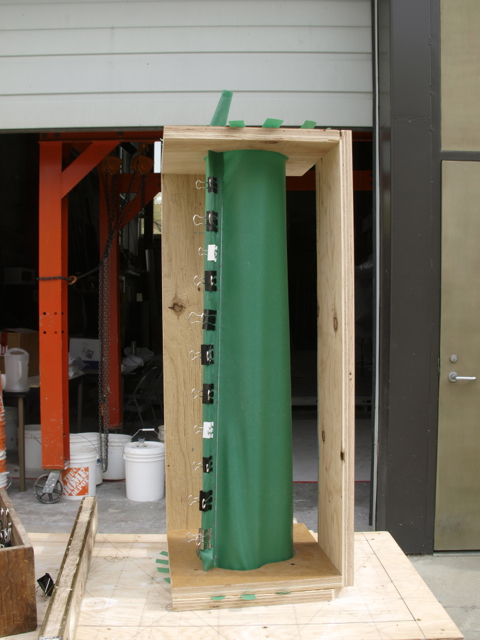
Fabric column secured at top and bottom of wooden frame, sewn seam reinforced with metal clips 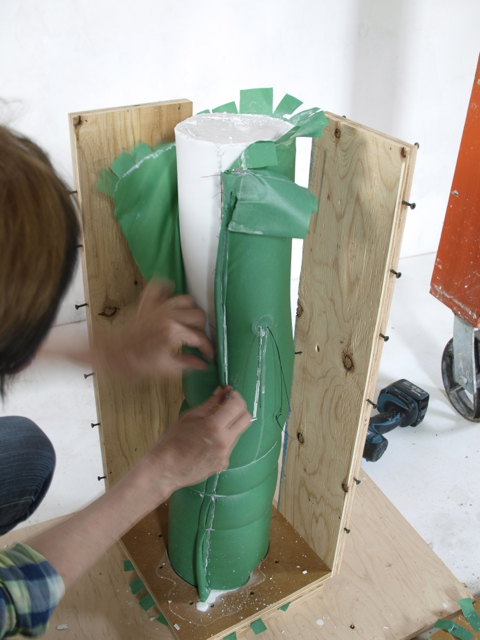
Removing the fabric from the plaster form 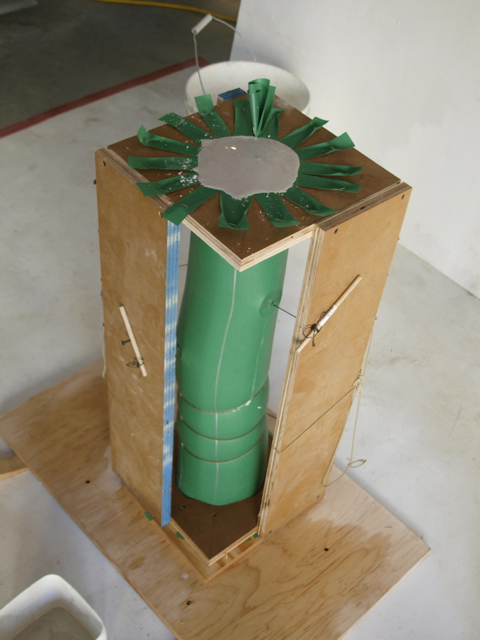
The water has been drained from the form and the form filled with plaster 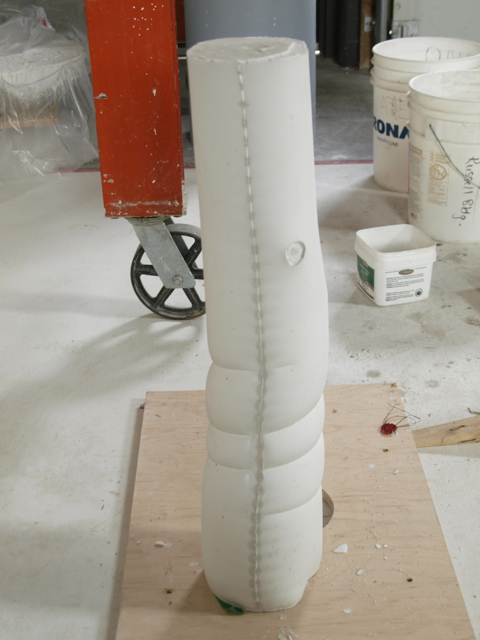
The plaster positive revealed and ready for me to make a negative plaster mould of
Hello, I have a question regarding the fabric you used for the formwork. Somehow I had always thought the type of fabric used for these formworks was somewhat porous, in that it allowed water to drip out while retaining the plaster/concrete/etc? I had imagined a dense nylon or some other kind of fabric… But I saw you first mould and tie the formwork shape to your liking by filling it with water first (which is a brilliant idea). So I wanted to ask what is the name of this fabric you use, and is it easy to find?